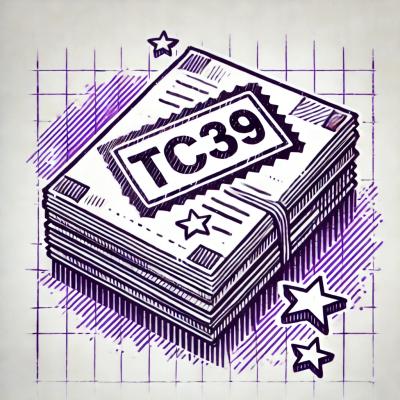Chromafi




🦅 cli syntax highlighting: any function - any object - 176 languages

Fork notice
This is Truffle's customized fork of Chromafi. The original Chromafi can be found here.
The differences are as follows:
- This fork allows colors to continue across lines.
- This fork exposes the
hljs object as chromafi.hljs so that it can be modified.
- This fork uses
lodash.merge instead of deepmerge for Webpack compatibility.
- This fork has removed the
ansi-mark functionality and dependency.
Support
Support the development of Chromafi by becoming a patreon.

Features

- JavaScript objects that are logged to the console... still look like JavaScript objects.
- Chromafi highlights JavaScript functions.
- Adjust indentation for tabbed code with Chromafi.
- User defined color palettes.
- Line numbers optional.
- Padding adjustment for use with background colors or tight spaces.
- Chromafi also highlights strings of code in 176 languages.
Usage
Chromafi a JavaScript Object
const chromafi = require('chromafi')
const obj = {
foo: 'bar',
baz: 1337,
qux: true,
zxc: null,
'foogle-bork': function (a, b) {
return b - a
}
}
const chromatastic = chromafi(obj)
console.log(chromatastic)

Chromafi a JavaScript Function
const chromafi = require('chromafi')
function add (a, b) {
return a + b
}
const chromantic = chromafi(add)
console.log(chromantic)

Chromafi a String of Code
const chromafi = require('chromafi')
const codeString = `
// Creates a Class based on Type
const create = (kind, parent) => {
// Create the Class based on the Type's
// Constructor or use an Anon. Func
const protoclass = kind.ctor || function () {}
// Inherit from a parent object
if (parent) {
protoclass.prototype = new Parent()
}
// Merge prototype from Class's Type
if (kind.proto) {
merge.call(protoclass.prototype, kind.proto)
}
return protoclass
}
`
const chromadactic = chromafi(codeString)
console.log(chromadactic)

Options
const chromafi = require('chromafi')
const chalk = require('chalk')
const obj = {foobar: 1337}
const options = {
lineNumberPad: 0,
codePad: 0,
indent: 2,
lineNumbers: true,
colors: {
base: chalk.bgBlack.white.bold,
line_numbers: chalk.bgCyan.black
}
}
const chromafanatic = chromafi(obj, options)
console.log(chromafanatic)

Light Color Scheme
Chromafi uses Chalk to write ANSI color codes to the terminal.
const chromafi = require('chromafi')
const chromafi = require('.')
const chalk = require('chalk')
const obj = {
foo: 'bar',
baz: 1337,
qux: true,
zxc: null,
'foogle-bork': function (a, b) {
return b - a
}
}
const chromafantastic = chromafi(obj, {
colors: {
base: chalk.bgWhite.black.bold,
keyword: chalk.red,
number: chalk.blue.dim,
function: chalk.black,
title: chalk.blue,
params: chalk.black,
string: chalk.black,
built_in: chalk.blue,
literal: chalk.blue,
attr: chalk.black,
trailing_space: chalk,
regexp: chalk.blue,
line_numbers: chalk.bgBlue.white
}
})
console.log(chromafantastic)

Highlighting Other Languages
Chromafi uses Highlight.js to syntax highlight to your code. This means Chromafi can highlight any language that Highlight.js can.
Let's Chromafi some assembler syntax:
const chromafi = require('chromafi')
const armAssemblyCode = `
.text
.global connect
connect:
mov r3, #2 ; s->sin_family = AF_INET
strh r3, [sp]
ldr r3, =server_port ; s->sin_port = server_port
ldr r3, [r3]
strh r3, [sp, #2]
ldr r3, =server_addr ; s->sin_addr = server_addr
ldr r3, [r3]
str r3, [sp, #4]
mov r3, #0 ; bzero(&s->sin_zero)
str r3, [sp, #8]
str r3, [sp, #12]
mov r1, sp ; const struct sockaddr *addr = sp
ldr r7, =connect_call
ldr r7, [r7]
swi #0
add sp, sp, #16
pop {r0} ; pop sockfd
pop {r7}
pop {fp, ip, lr}
mov sp, ip
bx lr
.data
socket_call: .long 281
connect_call: .long 283
/* all addresses are network byte-order (big-endian) */
server_addr: .long 0x0100007f ; localhost
server_port: .hword 0x0b1a
`
const chromalicious = chromafi(armAssemblyCode, {lang: 'arm'})
console.log(chromalicious)

Supported Languages
1c, abnf, accesslog, actionscript, ada, apache, applescript, arduino, armasm, asciidoc, aspectj, autohotkey, autoit, avrasm, awk, axapta, bash, basic, bnf, brainfuck, cal, capnproto, ceylon, clean, clojure-repl, clojure, cmake, coffeescript, coq, cos, cpp, crmsh, crystal, cs, csp, css, d, dart, delphi, diff, django, dns, dockerfile, dos, dsconfig, dts, dust, ebnf, elixir, elm, erb, erlang-repl, erlang, excel, fix, flix, fortran, fsharp, gams, gauss, gcode, gherkin, glsl, go, golo, gradle, groovy, haml, handlebars, haskell, haxe, hsp, htmlbars, http, hy, inform7, ini, irpf90, java, javascript, jboss-cli, json, julia-repl, julia, kotlin, lasso, ldif, leaf, less, lisp, livecodeserver, livescript, llvm, lsl, lua, makefile, markdown, mathematica, matlab, maxima, mel, mercury, mipsasm, mizar, mojolicious, monkey, moonscript, n1ql, nginx, nimrod, nix, nsis, objectivec, ocaml, openscad, oxygene, parser3, perl, pf, php, pony, powershell, processing, profile, prolog, protobuf, puppet, purebasic, python, q, qml, r, rib, roboconf, routeros, rsl, ruby, ruleslanguage, rust, scala, scheme, scilab, scss, shell, smali, smalltalk, sml, sqf, sql, stan, stata, step21, stylus, subunit, swift, taggerscript, tap, tcl, tex, thrift, tp, twig, typescript, vala, vbnet, vbscript-html, vbscript, verilog, vhdl, vim, x86asm, xl, xml, xquery, yaml, zephir
Credits
Thank you to the following Noun Project artists for the vectors used in the lead graphic.














